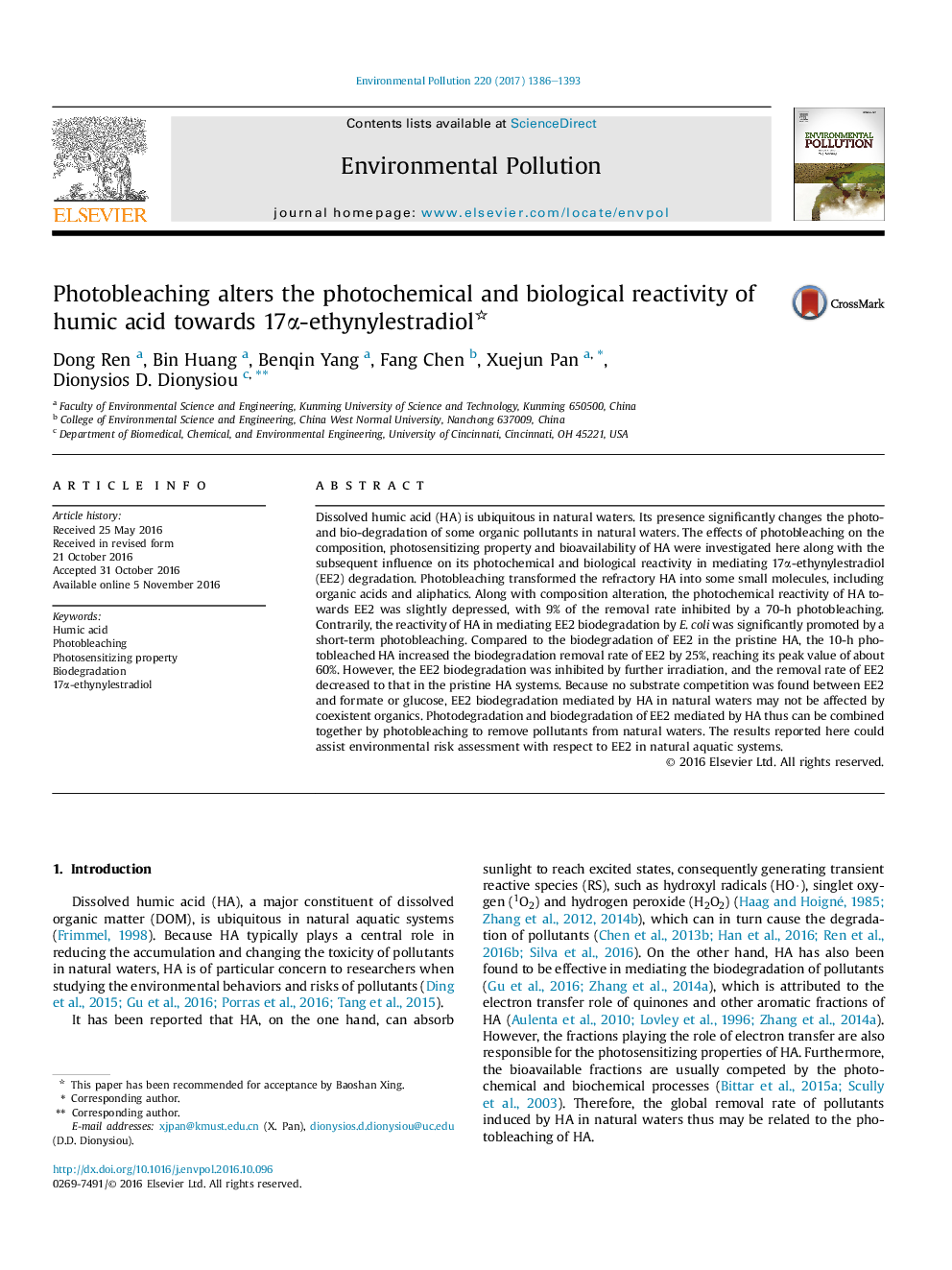| کد مقاله | کد نشریه | سال انتشار | مقاله انگلیسی | نسخه تمام متن |
|---|---|---|---|---|
| 5749569 | 1619153 | 2017 | 8 صفحه PDF | دانلود رایگان |

- Photobleaching enhances the bioavailability of refractory HA in waters.
- The photoinductive activity of HA in mediating EE2 is depressed by photobleaching.
- Some chemicals photogenerated from HA were competed by photo- and bio-degradation.
- EE2 biodegradation in HA solutions was accelerated by promoting E. coli growth
- No substrate competition was found for E. coli in degrading EE2.
Dissolved humic acid (HA) is ubiquitous in natural waters. Its presence significantly changes the photo-and bio-degradation of some organic pollutants in natural waters. The effects of photobleaching on the composition, photosensitizing property and bioavailability of HA were investigated here along with the subsequent influence on its photochemical and biological reactivity in mediating 17α-ethynylestradiol (EE2) degradation. Photobleaching transformed the refractory HA into some small molecules, including organic acids and aliphatics. Along with composition alteration, the photochemical reactivity of HA towards EE2 was slightly depressed, with 9% of the removal rate inhibited by a 70-h photobleaching. Contrarily, the reactivity of HA in mediating EE2 biodegradation by E. coli was significantly promoted by a short-term photobleaching. Compared to the biodegradation of EE2 in the pristine HA, the 10-h photobleached HA increased the biodegradation removal rate of EE2 by 25%, reaching its peak value of about 60%. However, the EE2 biodegradation was inhibited by further irradiation, and the removal rate of EE2 decreased to that in the pristine HA systems. Because no substrate competition was found between EE2 and formate or glucose, EE2 biodegradation mediated by HA in natural waters may not be affected by coexistent organics. Photodegradation and biodegradation of EE2 mediated by HA thus can be combined together by photobleaching to remove pollutants from natural waters. The results reported here could assist environmental risk assessment with respect to EE2 in natural aquatic systems.
206
Journal: Environmental Pollution - Volume 220, Part B, January 2017, Pages 1386-1393